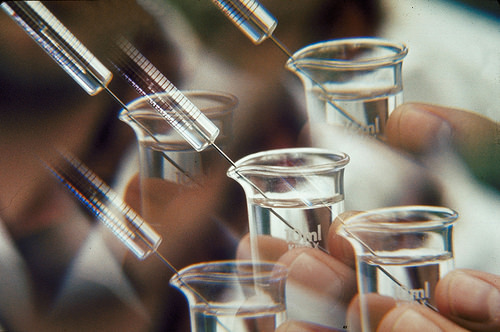The new antibiotic combinations could slow antibiotic resistance
A team of biologists from UCLA have discovered 8000 four- and five-drug combinations of antibiotics. These are more effective at killing harmful bacteria than the present ones.
Their findings were reported today in the journal NPJ Systems Biology and Applications.
Interestingly an expert panel of the health ministry in India recently recommended that 343 fixed drug combinations (FDCs) should be “prohibited” and six other FDCs should be “restricted or regulated”, after reviewing 349 fixed drug combinations (FDCs). This committee was set up after the Supreme Court in India had ordered a review in response to a 2016 health ministry directive that banned 349 FDCs, including popular brands like Saridon, Corex, D Cold Total, Phensedyl and Vicks Action 500 Extra, claiming they were “unsafe” and “irrational” for consumption. Some of the antibiotic combinations that were banned include : Cefixime + Azithromycin, Ofloxacin + Ornidazole Suspension, and Metronidazole + Norfloxacin. FDC means a combination of two or more drugs in a fixed dosage ratio.

The UCLA researchers analyzed how every possible four- and five-drug combination involving eight antibiotics, including many with varying dosages — a total of 18,278 combinations in all – worked against E. coli.
“People may think they know how drug combinations will interact, but they really don’t. Some drugs attack the cell walls, others attack the DNA inside”
Among the four-drug combinations, there were 1,676 groupings that performed better than they expected. Among the five-drug combinations, 6,443 groupings were more effective than expected. On the other hand, 2,331 four-drug combinations and 5,199 five-drug combinations were less effective than the researchers expected they would be.
“I was blown away by how many effective combinations there are as we increased the number of drugs,” said Van Savage, the study’s senior author and a UCLA professor of ecology and evolutionary biology and of biomathematics.
“People may think they know how drug combinations will interact, but they really don’t. Some drugs attack the cell walls, others attack the DNA inside,” added Savage. “It’s like attacking a castle or fortress. Combining different methods of attacking may be more effective than just a single approach.”
Researchers added that although the results are very promising, the drug combinations have been tested in only a laboratory setting and require further testing before being evaluated as possible treatments for people.



[…] More firepower: 8000 new antibiotic combos on the anvil medibulletin (press release) […]